Gokei Monju
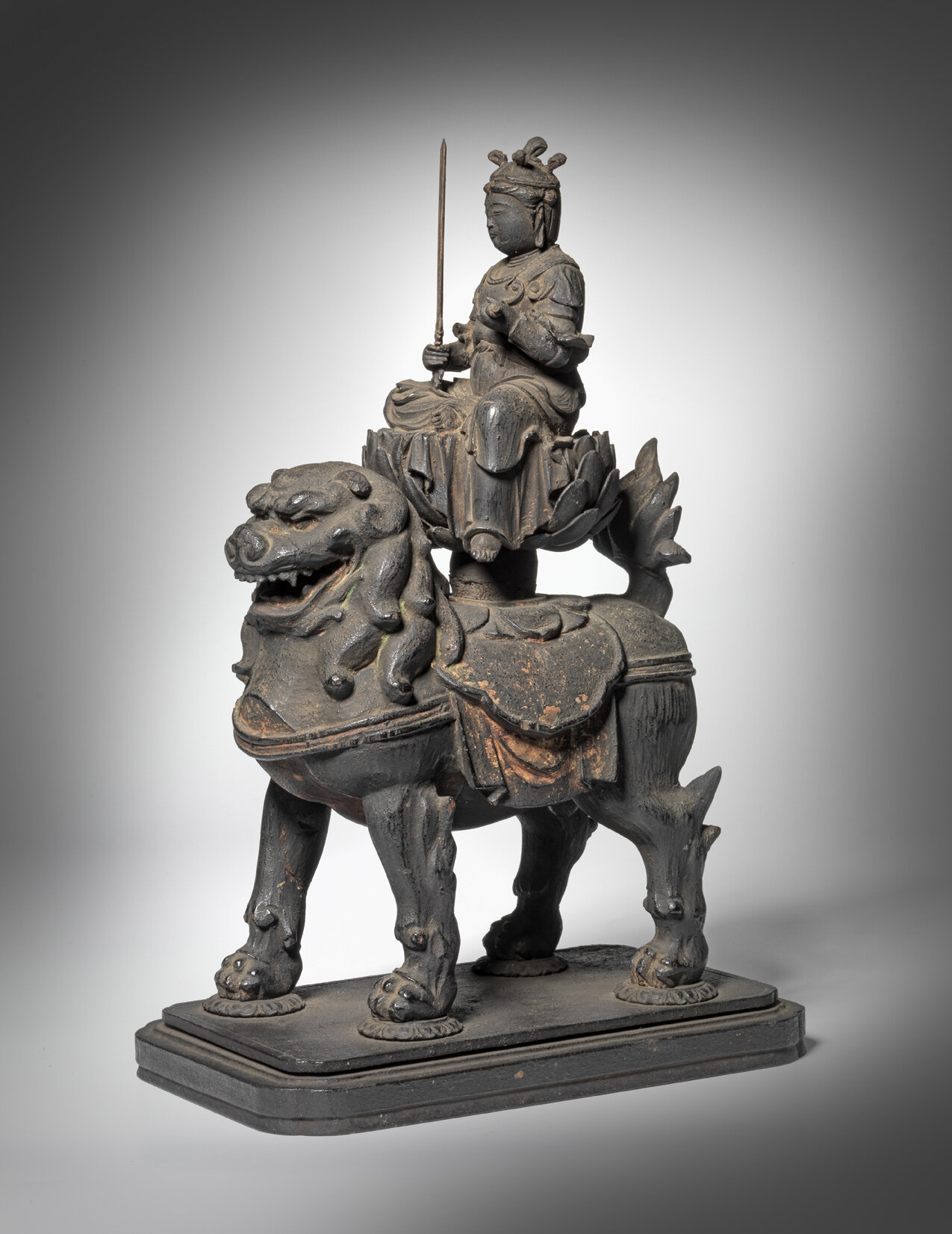
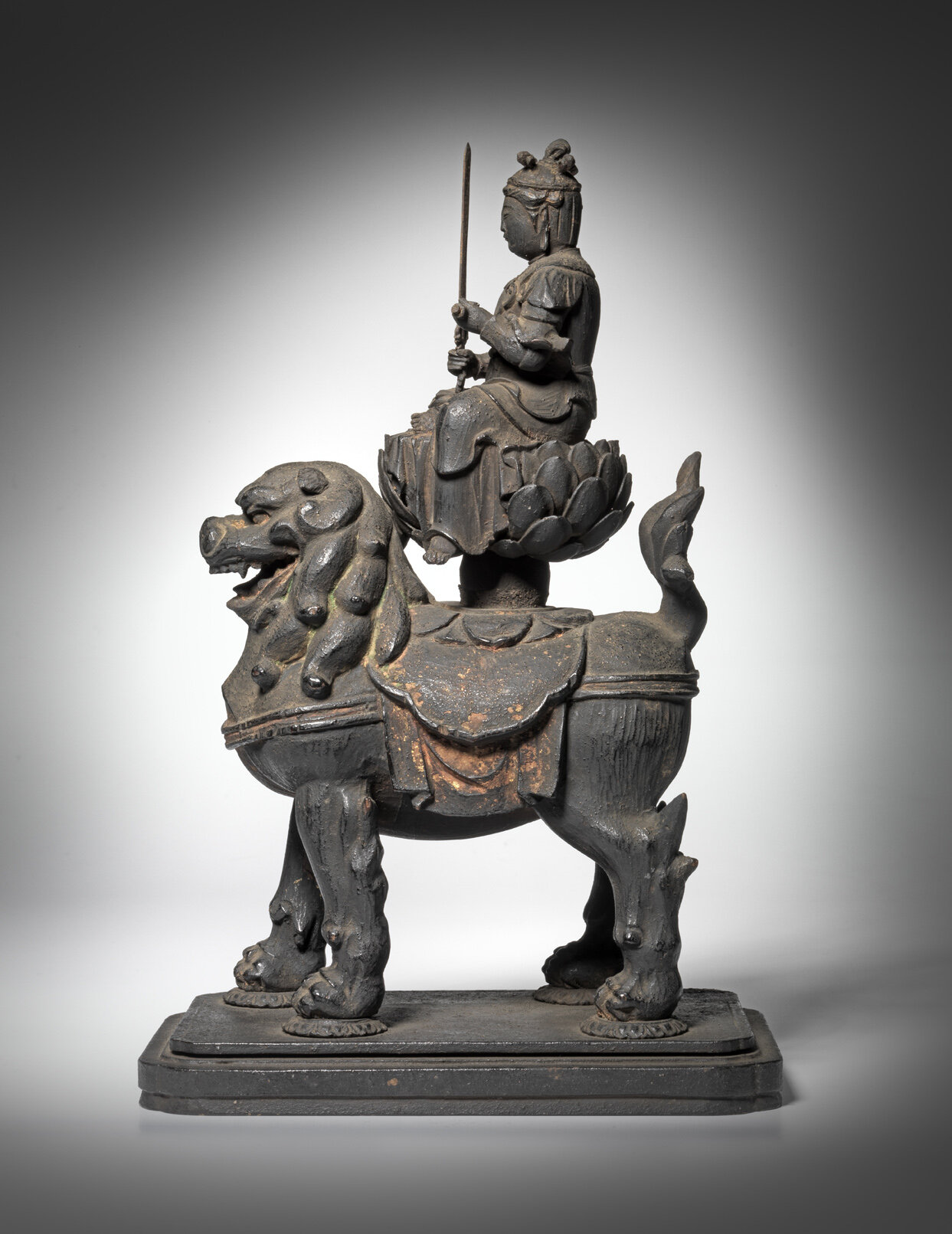
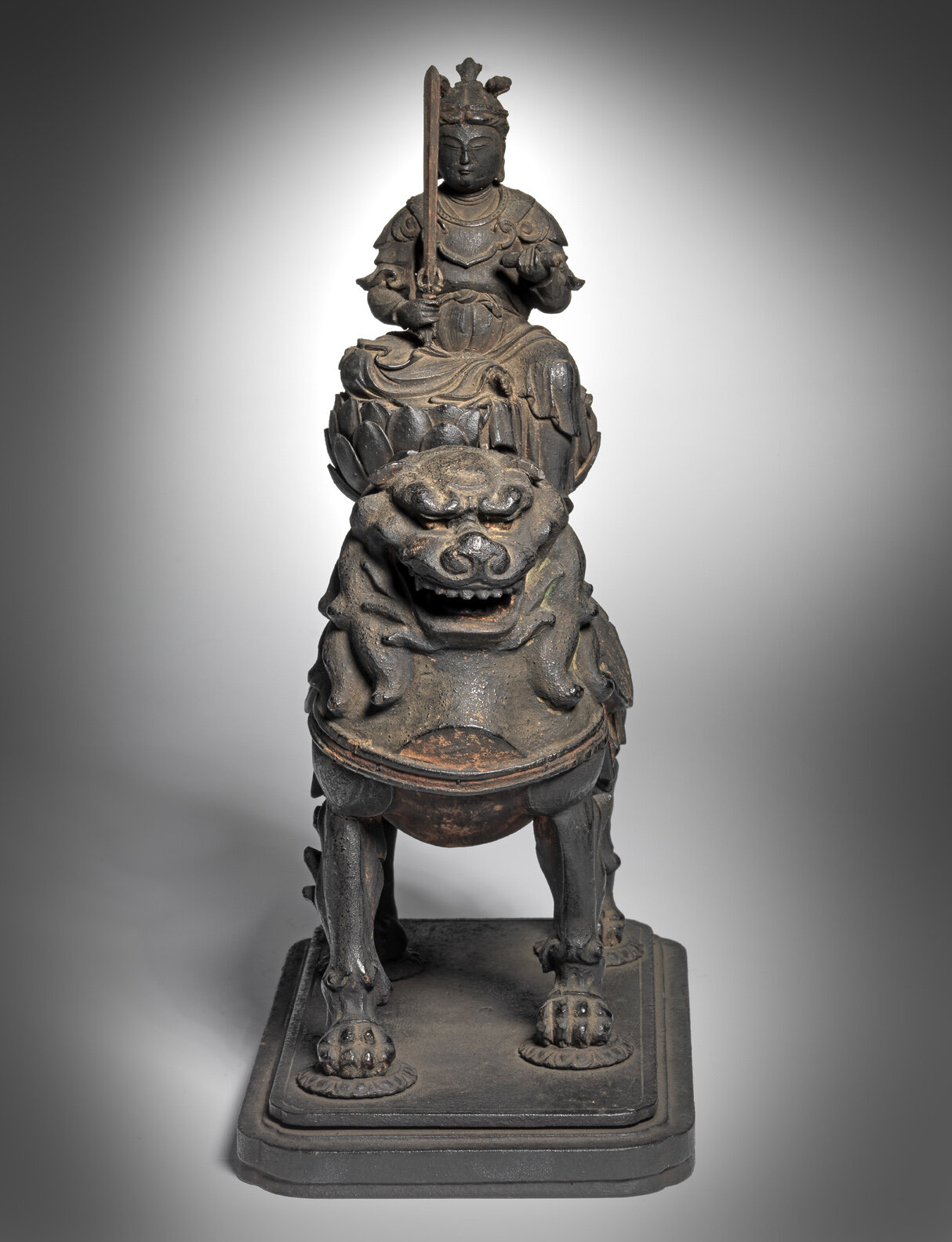

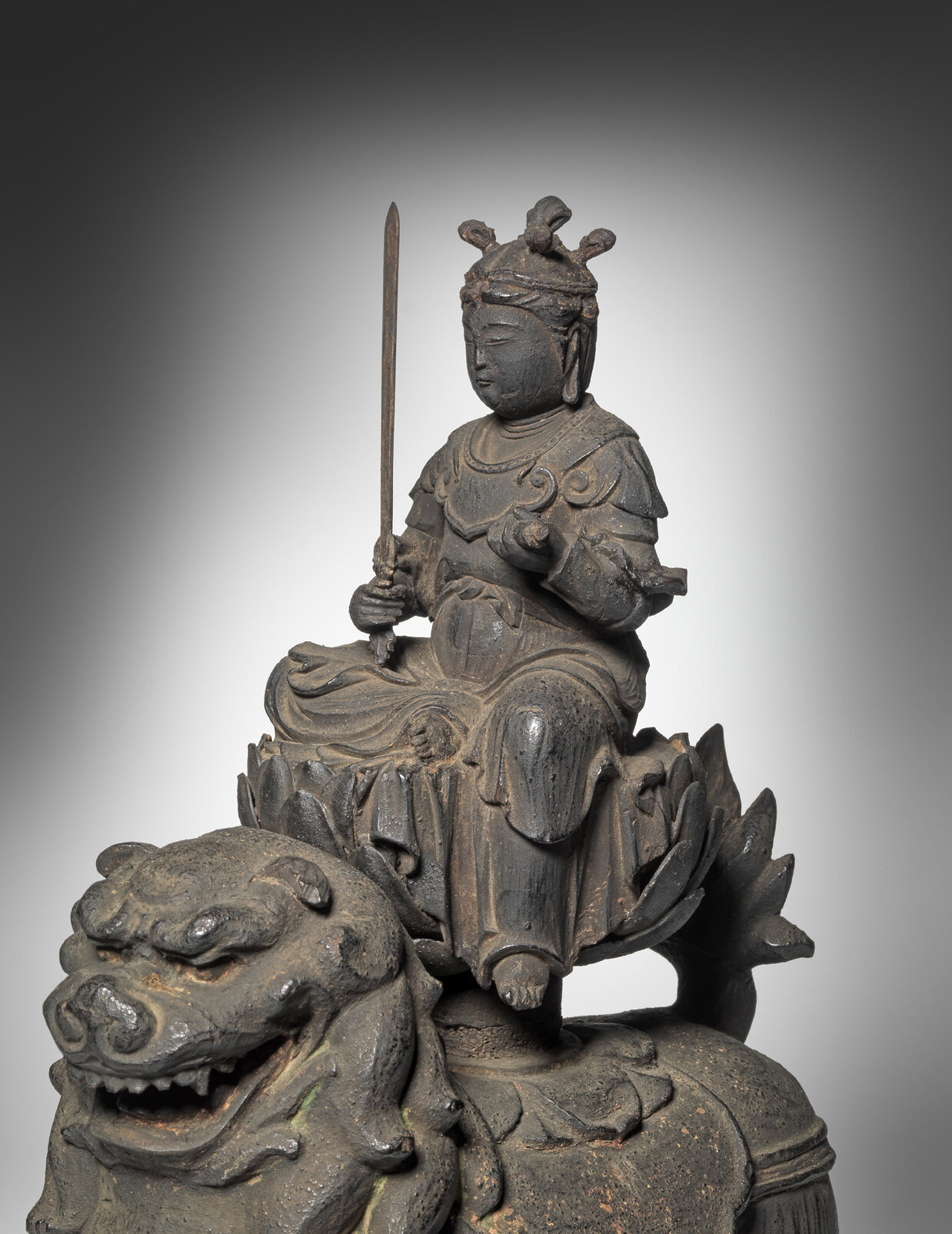
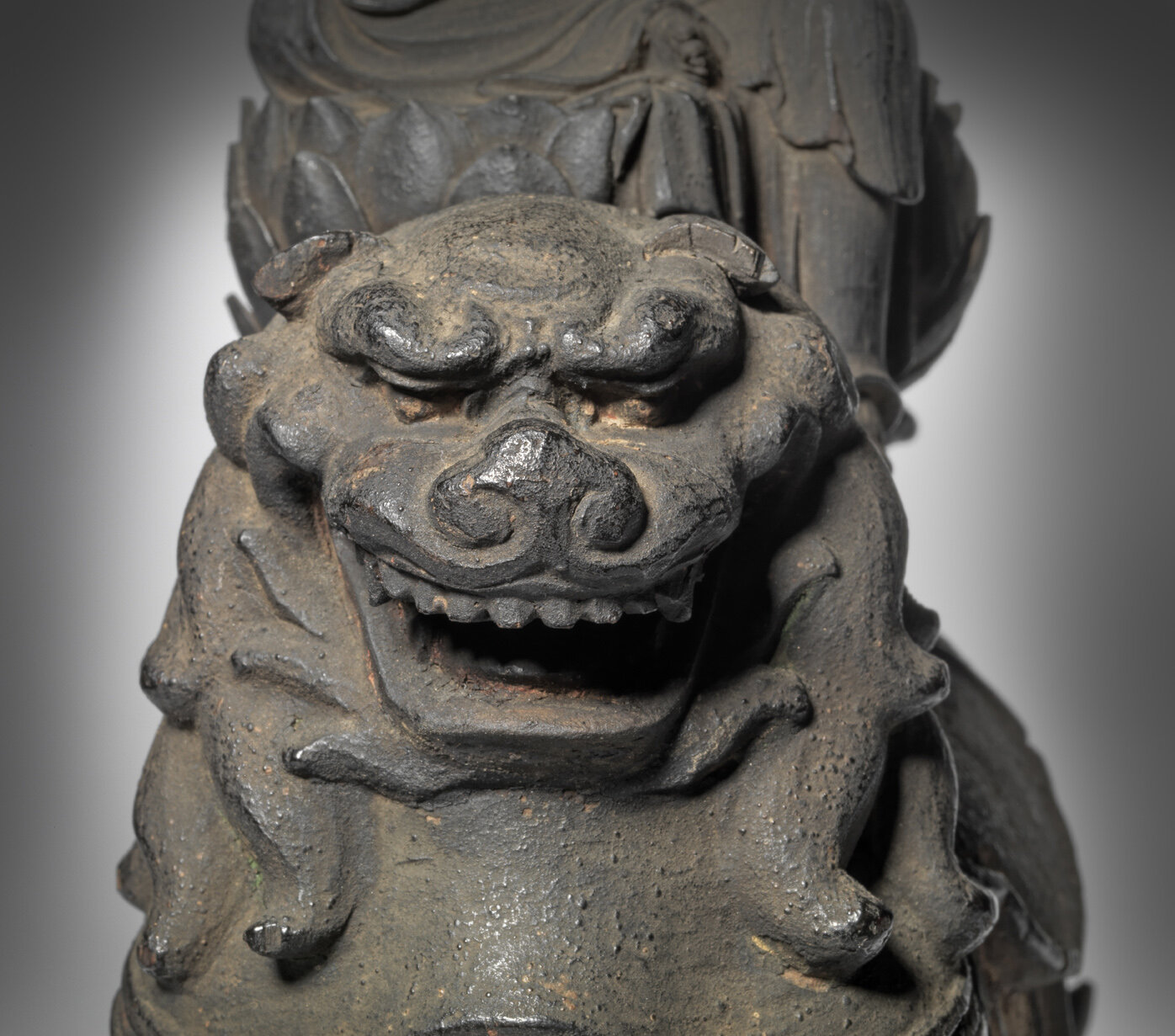

14th to early 15th century, very late Kamakura, Nambokuchō or early Muromachi period.
Height: 22 cm.; 8 2⁄3 in.
Monju (Sanskrit: Mañjuśrī) is the bodhisattva of transcendent wisdom, his significant presence in the Buddhist pantheon originating in early Mahāyana sutras and becoming pivotal in more than one branch of Esoteric Buddhism. While worship of Monju in Japan was introduced as early as the 7th century, ritual following of the deity was popularised in the 9th century by the monk Ennin (794–864), famous for his travels to China in 838 as part of a delegation sent to assimilate the cultural achievements of the Tang dynasty (618–907). during the expedition Ennin visited Wutaishan in Shanxi province, one of Chinese Buddhism’s Four Sacred Mountains and the hallowed place of enlightenment for Monju (Chinese: Wenshu). After his return Ennin constructed a hall of devotion to Monju in 861 at Enryaku-ji, the great Tendai monastery and headquarters on Mount Hiei, immediately north-east of Kyoto, so promoting the spread of Monju worship.
The lasting influence of the Wutai Monju cult is best seen in the bodhisattva’s iconography in Japan, exemplified by this sculpture of Gokei (Five-Topknot) Monju. His five hair topknots are considered to symbolise the five wisdom peaks of Wutaishan (literally: Five Platform Mountain), and the scalloped cape around his shoulders, embellishing the more typical draped robe beneath, is another hallmark of Wutai imagery.
This sculpture of Monju bears the typical identifying attributes of the bodhisattva of supreme wisdom; a sutra in his left hand, and a sword in his right, used to slice through illusion and arouse awareness. He sits with one leg tucked beneath him on a lotus pedestal, which in turn is mounted upon a roaring shishi (lion-dog), representing Monju’s ability to subdue ignorance with wisdom, just as he has tamed the savage beast on which he rides.
The small scale of the sculpture suggests that it was used for personal worship, either housed in a zushi, or given its integral base in a more permanent shrine. Typical ensembles involving Monju include the Shaka Triad, in which Buddha is placed at the centre, flanked by Monju to the left and Fugen (Sanskrit: Samantabhadra) to the right – the bodhisattvas of the wisdom and the practice of Buddhism (teaching and meditation), respectively. However, in Japan depictions of Gokei Monju were typically worshipped alone, not in such groupings.
despite arriving in Japan centuries earlier, Monju gained widespread popularity only in the 13th century, when he was incorporated into the Thirteen Buddhas (Jūsanbutsu) grouping of Shingon, and his rites were made accessible to the many followers of this influential sect. This new-found favour caused the artistic imagery of Monju to be refined and standardised; the social and political upheavals of the 14th and 15th centuries only served to strengthen Buddhist faith in Japan, allowing for stylistic continuity and consequent refinements in the depiction of the deity. In China, Five-Topknot Mañjuśrī was extremely rarely depicted; a Liao dynasty gilt-bronze figure of him now in the Nelson Gallery, Atkins Museum, Kansas City is justly famous for this very reason. In Japan, though, while hardly commonly depicted, Gokei Monju came into his own as a stand- alone deity; one for the more sophisticated supplicant.
